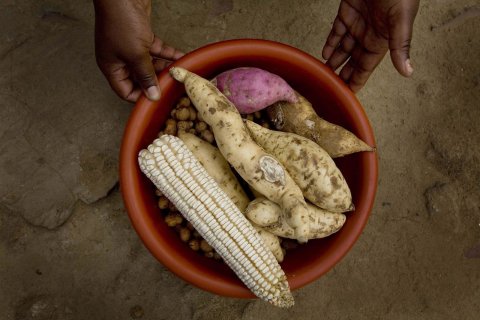New precision maps raise the stakes for African leaders and their communities

“Without good data, we’re flying blind. If you can’t see it, you can’t solve it.”
Kofi Annan, the former United Nations Secretary-General, is as succinct as he is insightful. His commentary in 1 March edition of the scientific journal Nature underscores the value of data as a vital step toward addressing child malnutrition.
That vital step took a great leap forward this week. By mapping the entire continent of Africa in 5x5 kilometer increments, my colleagues and I at the Institute of Health Metrics and Evaluation at the University of Washington have reached a milestone in health metrics sciences.
Our studies, also published in this week’s Nature, identify geographic levels of child growth failure (CGF) and years of education among adults many previously thought impossible.
Some may question the need for such granular data – community by community. Allow me to explain.
CGF, an umbrella term that includes stunting, wasting, and underweight among children under 5, and levels of education typically are determined at the national level. Such measurements fail to account for individual communities. Within a single country, results among these communities vary widely.
It is clear from our findings that nearly all African nations between 2000 and 2015 had at least some areas of improved CGF, but none enough to be on track meet the United Nations Sustainable Development Goal to end malnutrition by 2030.
Like CGF, our education research concluded some communities are well behind national averages. Many communities lack even basic education infrastructure, such as schools and teachers. It is all but certain that, unless and until these communities receive adequate resources, educational progress will be inhibited; some countries also will fail to meet SDG 4, which aims to reduce inequalities in education based on income, sex, and location.
These maps are examples of a new discipline in scientific research: “precision public health.” They pinpoint successes and shortcomings in health, along with education, providing unprecedented levels of valuable information.
The maps also offer what Mr Annan calls “finely grained insight” which demonstrate a “tremendous responsibility to act.” That responsibility is divided among a range of stakeholders – international institutions, non-governmental organizations, and donor governments. But the ultimate responsibility lies in the offices of government leaders in every African nation.
With these two studies, as well as additional ones forthcoming on other health concerns, those leaders have no excuses to ignore their communities struggling to catch up. The health and well-being of their citizens, as well as their nations’ abilities to compete economically – regionally and internationally – are at stake.